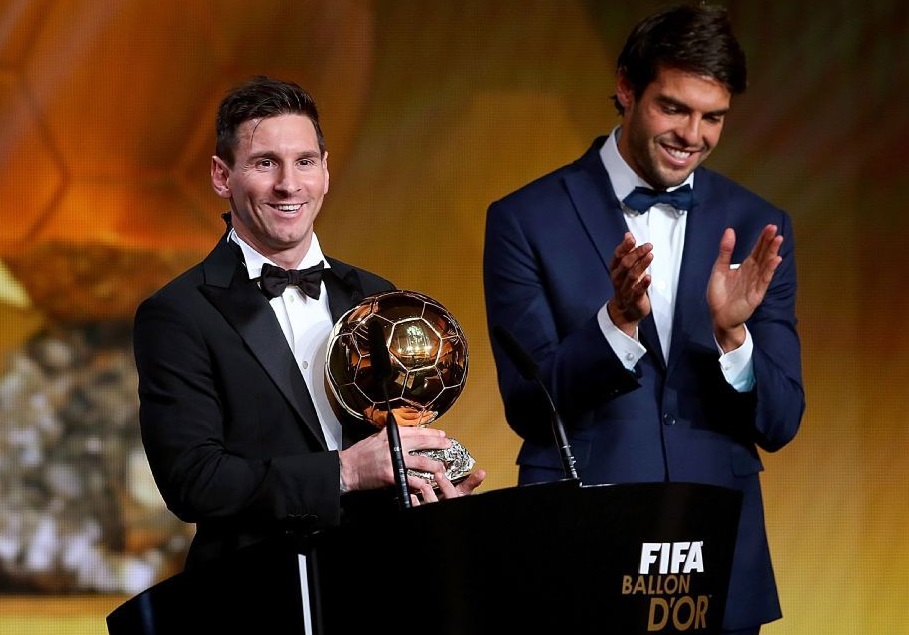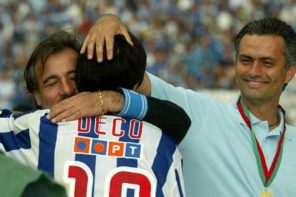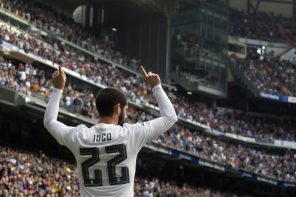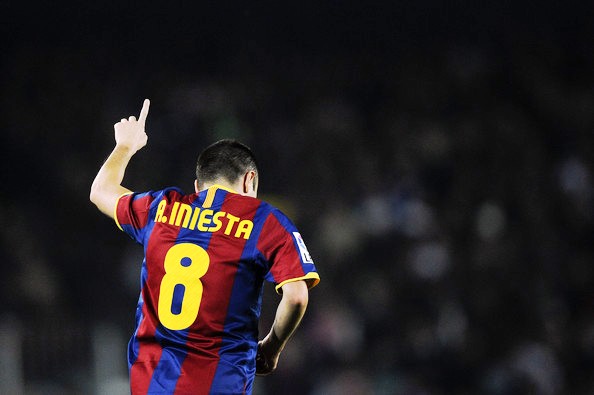The crowning of Lionel Messi as the world’s best player in 2015 reasserted the dominance of No.10s winning the Ballon d’Or throughout the trophy’s history.
Messi was voted the winner for an unprecedented fifth time, therefore making it the fourteenth occasion out of a possible sixty that a fantasista has picked up the award.
That equates to just over an incredible 23% since the Ballon d’Or’s inauguration back in 1956, with authentic No.10s such as Gianni Rivera, Michel Platini, Roberto Baggio, Zinedine Zidane, Rivaldo, Ronaldinho and Kaka preceding Messi.
Overall, players classified as strikers provide a higher percentage of winners (approximately 37%) if using a broad-brush on positional classification; but the ‘No.10’ share would increase if those players harder to classify were deemed as such – for example, what should (the Spanish) Luis Suarez and Florian Albert be classed as? Can Alfredo Di Stefano, Johan Cruyff and Ruud Gullit really be labelled to any one position?
There is also another hugely important notion to consider, which, if modern rules would have applied, would surely have officially added to the list of fantasista winners.
For decades the temptation was there to suggest the winner of the Ballon d’Or was also the world’s best, however only Europeans were eligible to win it, until a change in rules in 1995. Many other annual awards, generally ran by sports publications (notably Italy’s Guerin Sportivo – the oldest sports magazine in the world) who included those born in other continents, simply didn’t garner the same kudos.
FIFA aimed to change this with the creation of an official FIFA World Player of the Year award in 1991 but eventually pulled rank on UEFA and swallowed the Ballon d’Or, amalgamating the two awards (until 2016 when it split again).
So what of all the South Americans who could rightly lay claim to being considered as world’s best up until that point? Namely, the fantasisti? Namely luminaries like Zico and Maradona?
There was no official South American Player of the Year award from 1956 (when the Ballon d’Or launched) until 1971, and from 1986 only players based on the continent could win it.
So if we applied today’s Ballon d’Or rules over these time periods, Zico would have legitimate claims to the award in both 1977 and 1981 when he was South American Player of the Year, instead of strikers Allan Simonsen and Karl-Heinz Rummenigge; particularly in ’81 when the Brazilian inspired Flamengo to a State Championship, Copa Libertadores and Intercontinental Cup. Crucially, Zico was also voted the ‘world’s best’ by publications in Italy and Spain.
There’s also a case for the Brazil playmaker in 1982 when striker Paolo Rossi won the award, however winners of major international tournaments in the same year (the World Cup in Rossi’s case) tend to be anointed.
Diego Maradona’s claims are more doubtful in the years he was voted as South America’s best. Would the 18 year old realistically have been voted ahead of Kevin Keegan in 1979, given Keegan’s standing at that time? Guerin Sportivo certainly thought so, although it seems their thoughts were more to do with absolute potential, and the Argentine’s starring role in winning that year’s World Youth Championship.
The only other occasion Maradona was voted as his continent’s best was the following year, although this time, Guerin Sportivo came to the same conclusion as those who awarded Rummenigge his first Ballon d’Or in 1980.
There would surely be no doubts for awarding Maradona the 1986 Ballon d’Or over Igor Belanov, with the No.10 single-handedly dominating a World Cup for his country like no other.
If being pitted against the almighty Dutch duo winners of Ruud Gullit and Marco van Basten during the subsequent years of ’87-’89, when AC Milan and Napoli competed so spectacularly, would Diego have won out then?
Other South American playmakers – all of whom won their continent’s premier award – that could have been in contention during later years are Rai (part of a dominant Sao Paulo team that conquered in the Copa Libertadores and Intercontinental Cup) in 1992, Enzo Francescoli (who inspired Uruguay to win the Copa America and was voted Player of the Tournament) in 1995, and the enigmatic Juan Roman Riquelme (Copa Libertadores winner) in 2001.
These hypothetical, yet wholly plausible assertions simply add to the fantasista dominance of the award; an assumption that gains extra credence when viewing the FIFA honour from its 1991 inception, through to its guise until 2015: the FIFA Ballon d’Or.
Of those award winners 13 of the 25 have been No.10s – Baggio (1993), Zidane (1998, 2000, 2003), Rivaldo (1999), Ronaldinho (2004, 2005), Kaka (2007) and Messi (2009, 2010, 2011, 2012, 2015). That’s an incredible 52% share, with the next nearest positional classification (strikers) garnering 24%.
Lionel Messi has no doubt helped cement the total dominance of the fantasista in football’s greatest individual award – but when he’s gone, which authentic No.10 will next lift the trophy? Until then, the mercurial Argentine continues the proud playmaker tradition in the Ballon d’Or.







